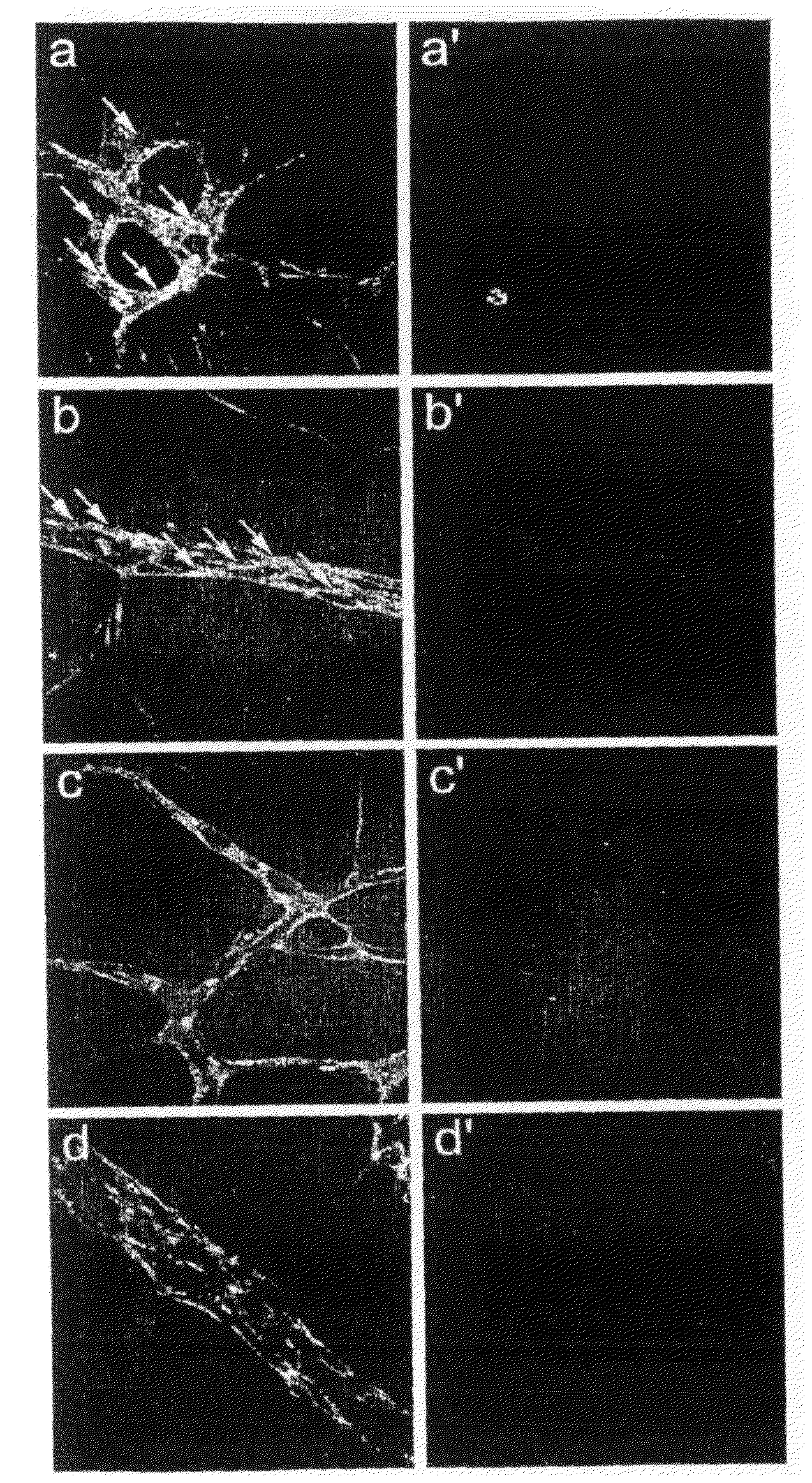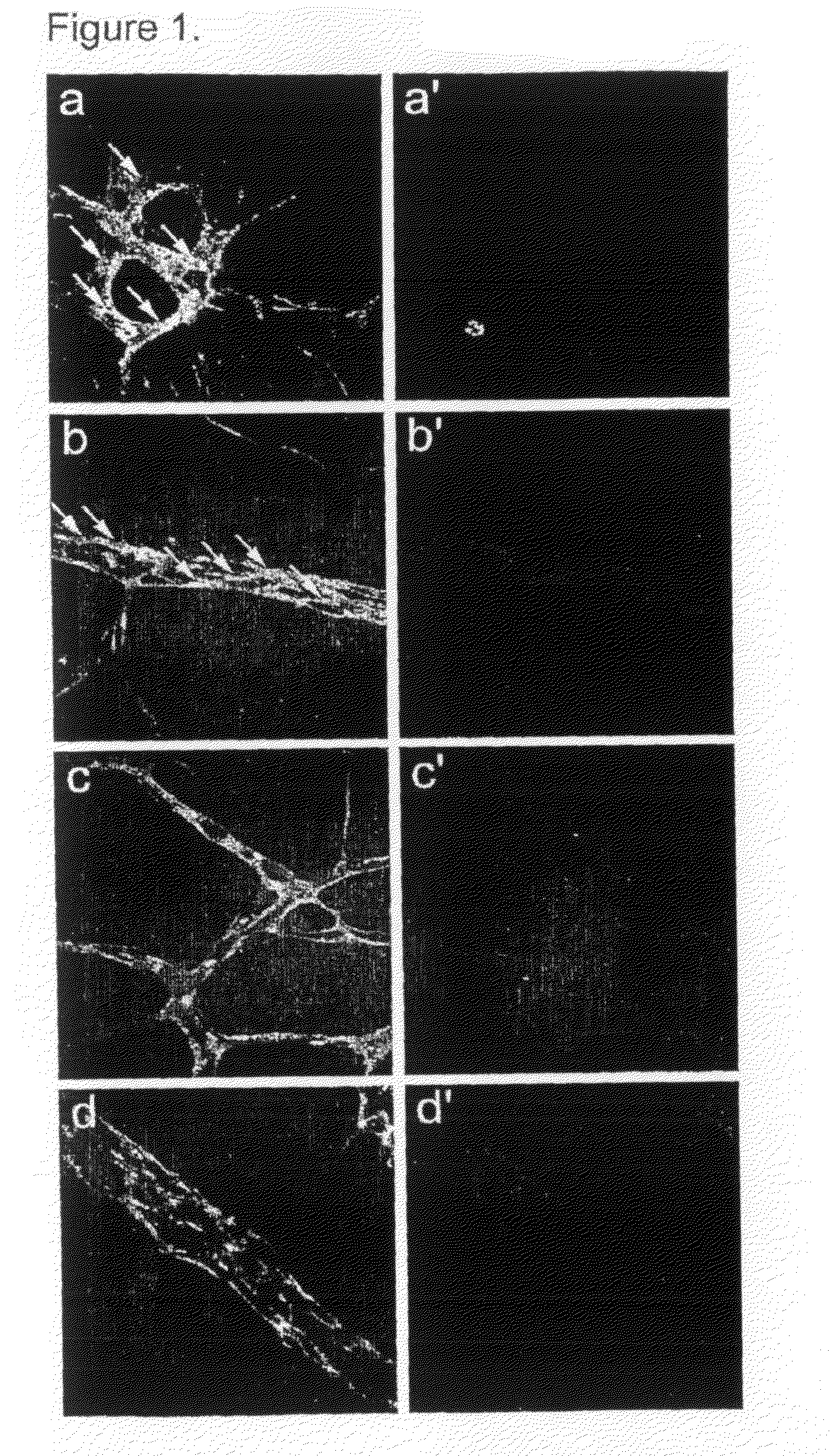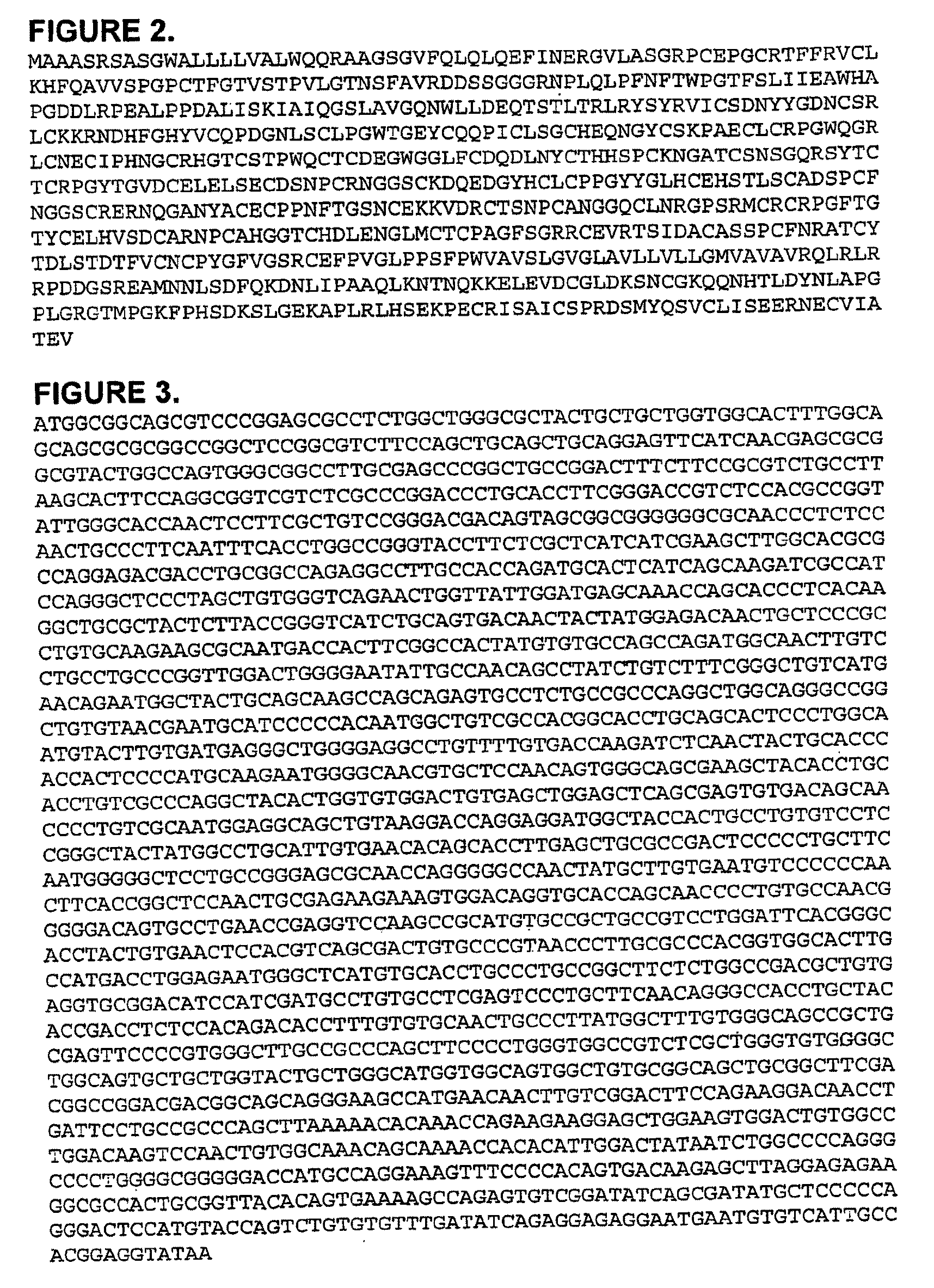DLL4 Signaling Inhibitors and Uses Thereof
a signaling inhibitor and anti-dll4 technology, applied in the field of angiogenesis, can solve the problems of increased endothelial cell proliferation, improper endothelial cell differentiation, improper arterial development in vasculature, etc., and achieve the effect of inhibiting tumor growth, efficiently disrupting tumor angiogenesis, and reducing tumor growth
- Summary
- Abstract
- Description
- Claims
- Application Information
AI Technical Summary
Benefits of technology
Problems solved by technology
Method used
Image
Examples
example 1
Identification of DLL4-Blocking Antibodies
[0275]Notch blocking ELISA. 96-well microtiter plates were coated with recombinant rat Notch1-Fc (rrNotch1-Fc, R&D Systems) at 0.5 .mu.g / ml. Conditioned medium containing DLL4-AP (amino acid 1-404 of DLL4 fused to human placenta alkaline phosphatase) was used in the assay. To prepare conditioned medium, 293 cells were transiently transfected with plasmid expressing DLL4-AP with Fugen6 reagent (Roche Molecular Biochemicals). Five days posttransfection, the conditioned medium was harvested, filtered and stored at 4.degree. C.
[0276]Purified antibodies titrated from 0.15 to 25 .mu.g / ml were preincubated for 1 hr at room temperature with DLL4-AP conditioned medium at a dilution that conferred 50% maximally achievable binding to coated rrNotch1-Fc. The antibody / DLL4-AP mixture was then added to rrNotch1-Fc coated plate for 1 hr at room temperature, after which plates were washed several times in PBS. The bound DLL4-AP was detected using 1-Step PNP...
example 2
Visualization and Quantification of Cell Surface Expression and Internalization of DLL4
[0277]Tagged (e.g. His or Myc tagged) or untagged full length or fragments of DLL4 were transfected into cells (e.g. COS7 cells). The localization of DLL4 was visualized using fluorescent antibodies recognizing the tagged or normal DLL4 protein. Membrane or nuclei stainings as well as or co-transfections of labeled proteins (e.g. Rab9- or RhoB-fused to e.g. Enhanced Green Fluorescent Protein) located to certain subcellular locations were used to determine the relative distribution of the DLL4 protein. The fluorescent proteins were detected using a confocal microscope.
[0278]The effects of DLL4-binding antibodies on the internalization of DLL4 were assessed by addition of specific antibodies to the cell culture medium and subsequent analysis of the cellular distribution of DLL4 protein.
[0279]The DLL4 expressing cells were also co-cultured with cells endogenously expressing Notch receptor(s) or cells...
example 3
Quantification of the Plasma Membrane Versus Total Amount of DLL4 Protein
[0280]Tagged (e.g. His or Myc tagged) or untagged full length or fragments of DLL4 were transfected into cells (e.g. COS7 cells), which were biotinylated prior to harvesting. DLL4 protein was immunoprecipitated using an anti-tag antibody or an antibody against DLL4 from total lysates and blotted using streptavidin-HRP (Horseradish peroxidase) to detect the biotinylated DLL4. The total amount of DLL4 was detected by reprobing with an anti-tag antibody. The alteration of the relative distribution between cell surface and total amount of DLL4 was determined in the presence and absence of DLL4 binding antibodies.
[0281]The DLL4 expressing cells were also cultured together with cells endogenously expressing Notch receptor(s) or cells transfected with Notch receptors to enhance the DLL4 internalization through ligand-receptor activation. Alternatively, the DLL4 expressing cells were cultured on plates coated with Notc...
PUM
| Property | Measurement | Unit |
|---|---|---|
| pH | aaaaa | aaaaa |
| temperature | aaaaa | aaaaa |
| ionic strength | aaaaa | aaaaa |
Abstract
Description
Claims
Application Information
 Login to View More
Login to View More - R&D
- Intellectual Property
- Life Sciences
- Materials
- Tech Scout
- Unparalleled Data Quality
- Higher Quality Content
- 60% Fewer Hallucinations
Browse by: Latest US Patents, China's latest patents, Technical Efficacy Thesaurus, Application Domain, Technology Topic, Popular Technical Reports.
© 2025 PatSnap. All rights reserved.Legal|Privacy policy|Modern Slavery Act Transparency Statement|Sitemap|About US| Contact US: help@patsnap.com



